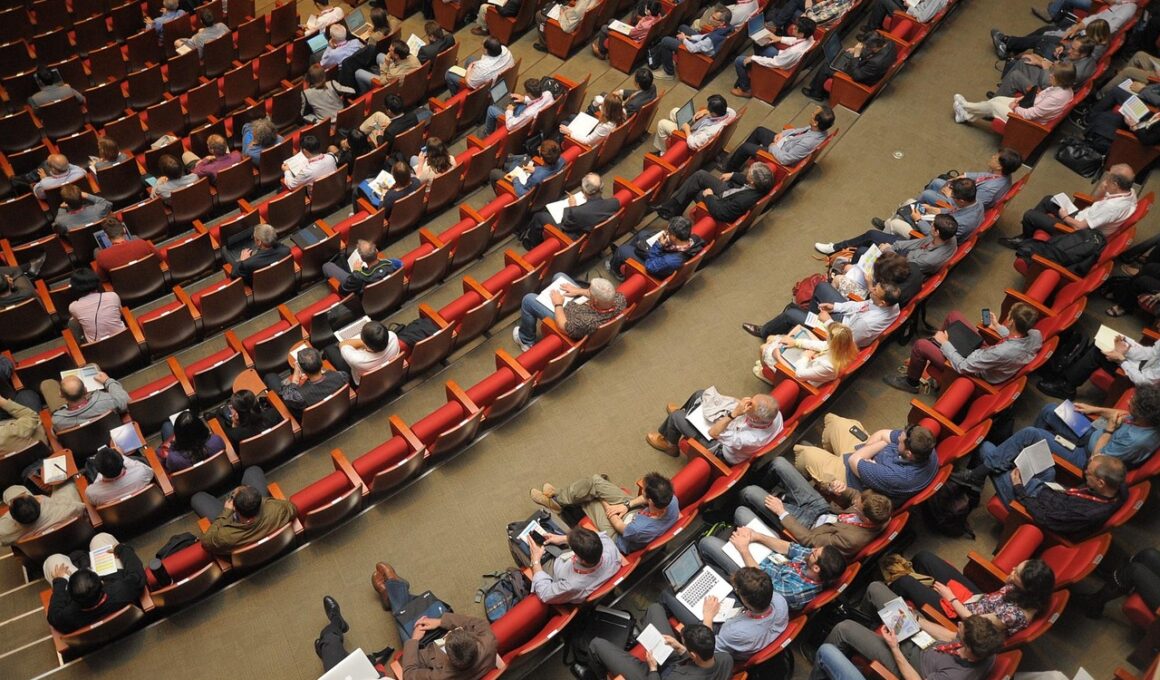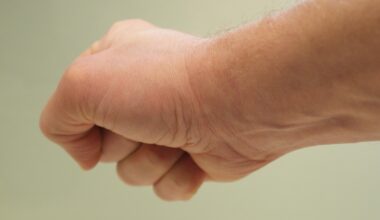Biomechanics in Rehabilitation: New Perspectives from Conferences
Biomechanics conferences serve as pivotal forums for experts to converge and discuss the latest advancements in rehabilitation science. These events bring together healthcare professionals, researchers, and industry leaders to share cutting-edge techniques and evidence-based practices. Participants often showcase their research findings, contributing to a collective understanding of biomechanics’ role in rehabilitation. By bridging theoretical studies with clinical application, these conferences promote collaboration and innovation. Additionally, they allow attendees to engage with novel technologies and methodologies. Workshops and seminars often provide hands-on experience with state-of-the-art equipment, improving clinicians’ confidence in implementing new strategies. Networking opportunities allow for the exchange of ideas and the forging of partnerships that can lead to future research initiatives. Attendees leave inspired, equipped with new knowledge that can positively impact patient outcomes. As the field evolves, continuous education through these conferences is crucial for keeping practitioners up-to-date. Ultimately, biomechanics in rehabilitation holds immense potential for enhancing recovery and functional performance in patients, ultimately driving the future of healthcare.
The importance of biomechanics in rehabilitation extends to various patient populations, which is a recurring theme in conference discussions. Researchers and clinicians often emphasize the diverse applications tailored to individual needs, whether for athletes recovering from injuries or elderly patients working to regain mobility. During conferences, presentations often highlight case studies where biomechanical assessments have streamlined rehabilitation outcomes. Attendees learn about innovative approaches, such as motion analysis technologies, which allow precise tracking of patient movements. These tools enable practitioners to identify inefficiencies and injury risk factors, guiding personalized rehabilitation plans. A spotlight on research often illustrates how biomechanics can inform therapeutic interventions, using data to support decision-making. Breakout sessions encourage interaction, allowing the exchange of ideas surrounding best practices. Moreover, panels featuring multidisciplinary teams highlight how collaborative care enhances rehabilitation effectiveness. By integrating insights from physical therapy, orthopedic surgery, and sports science, comprehensive approaches are developed. Participants leave these sessions with holistic perspectives, recognizing the value of teamwork in managing complex rehabilitation cases. As such, biomechanics continues to be a significant focus in discussions, driving forward the evolution of rehabilitation practices.
Technological innovations consistently emerge as a major highlight during biomechanics conferences, demonstrating their impact on rehabilitation practices. The integration of wearable devices and advanced imaging systems has transformed the way professionals approach patient care. Attendees often engage with demonstrations showcasing real-time data collection, offering insights into patient progress. This hands-on exposure proves invaluable, as it aligns theory with practical application. One of the pressing topics highlighted is the emergence of virtual reality (VR) and augmented reality (AR) technologies, which revolutionize rehabilitation exercises. These immersive environments not only enhance engagement but also provide unique opportunities for users to experience motions in a controlled setting. Talks frequently address how VR can facilitate rehabilitation for patients with neurological impairments or post-operative recovery. Furthermore, advancements in robotics and assistive devices are integral to discussions. The potential of robotic exoskeletons to aid mobility for those with severe physical limitations captivates audiences. Each technological advancement brings discussions of ethical considerations and practical limitations, ensuring attendees appreciate both the promise and challenges ahead. As innovations continue to reshape the field of biomechanics, conferences remain essential for knowledge dissemination.
Integrating Research and Clinical Practice
A common thread throughout biomechanics conferences is the emphasis on integrating research findings with clinical practice. By prioritizing evidence-based approaches, practitioners ensure that rehabilitation strategies are not only innovative but also scientifically validated. Conference presentations often highlight studies showcasing successful rehabilitation protocols based on biomechanical assessments, which instill confidence in attendees. Participants have the opportunity to discuss methodologies, addressing questions regarding implementation in diverse clinical settings. The synergy between academia and clinical practice is further enhanced through collaborative workshops, fostering relationships that lead to enhanced patient care. Attendees frequently leave with templates and checklists to standardize assessments and protocols in their practices. Continuing medical education credits offered at these conferences incentivize participation and underscore the importance of lifelong learning. Moreover, collaborative research initiatives often emerge from these events, addressing pressing clinical questions that practitioners face daily. Networking fosters an environment where ideas and resources flow freely, promoting innovations in problem-solving. Ultimately, bridging research and practice is crucial for optimizing rehabilitation outcomes, underscoring the vital role of biomechanics in patient recovery.
The role of biomechanics in rehabilitation also encompasses the need for personalized treatment plans, as emphasized during discussions at biomechanics conferences. Tailoring interventions to individual patients enhances their rehabilitation journey, increasing effectiveness. Participants often engage in conversations around how biomechanics can guide customized approaches for various demographics, including children, athletes, and the elderly. Notably, conferences spotlight adaptive technologies that accommodate specific needs, illustrating advancements that enhance therapy. Workshops demonstrate the practical application of tests that measure strength, range of motion, and functional abilities. This personalized assessment allows for an accurate understanding of each patient’s unique situation. Participants leave with actionable insights, incorporating these concepts into their practice. Learning about patient-centered care practices that integrate biomechanics informs strategies to engage clients, fostering motivation. Knowledge exchange throughout these events frequently leads to discussions about improving patient adherence to rehabilitation programs. By acknowledging diverse needs and preferences, practitioners can create more effective rehabilitation plans. The commitment to personalized care remains a crucial takeaway from biomechanics conferences, redefining rehabilitation success and delivery in clinical practices.
Another essential aspect highlighted in biomechanics conferences is the ongoing research addressing industry standards and guidelines. As biomechanics in rehabilitation continues to evolve, defining clear protocols becomes vital to ensure consistent care. Discussions around these standards promote awareness among attendees about the importance of following guidelines that enhance treatment effectiveness. Often, conversations extend into regulatory frameworks governing practices, driving home the message of compliance with current scientific evidence. Participants recognize that adhering to evolving guidelines ultimately raises the standard of care provided to patients. Keynote speeches often provide insights into upcoming trends and shifts in rehabilitation practices dictated by the latest research findings, which attendees eagerly absorb. Furthermore, sessions dedicated to grant opportunities and funding highlight ways to support future research endeavors. As attendees connect with industry leaders, securing funding for innovative projects becomes plausible. By cultivating a culture of shared knowledge, biomechanics conferences aim to advance the discipline while aligning practice standards. Ultimately, discussions surrounding compliance and guidelines reinforce the collective responsibility of healthcare professionals to provide the highest quality of care.
Conclusions and Future Directions
As biomechanics conferences conclude, participants reflect on the knowledge and connections gained, considering their implications for rehabilitation practices. The collective enthusiasm often leads to the creation of action plans outlining how to implement learned strategies. Additionally, the dialogues spark motivation among attendees to pursue further studies and partnerships that can enhance professional development. Recognizing that the field is continually evolving, practitioners depart with a renewed commitment to integrating biomechanics into everyday rehabilitation practices. Participants are inspired to keep abreast of the latest research findings, understanding the impact on effective clinical methods. This dedication becomes essential in shaping future rehabilitation standards. The powerful role of biomechanics in driving innovation within rehabilitation underscores the importance of interdisciplinary collaboration as attendees prepare for future events. As they engage with ongoing research, practitioners can contribute to knowledge advancements that align with changing patient needs. Holding true to a shared vision of improving rehabilitation outcomes fosters an environment of positivity and optimism. Ultimately, biomechanics conferences not only elevate professional practices; they also illuminate the path forward for rehabilitation in a constantly changing healthcare landscape.
In summary, biomechanics conferences play a critical role in advancing the field of rehabilitation science. Through the sharing of innovative practices, technological advancements, and research integration, these events effectively enhance the professional capacities of healthcare practitioners. Attendees consistently benefit from the opportunities to engage with interdisciplinary teams, enriching their understanding of collaborative care. Discussions surrounding personalization, standards, and future directions foster a culture of excellence in rehabilitation. As participants leave these events, they carry the insights gained into their practices, ultimately affecting patient care positively. The commitment to continuous education emphasizes the shared responsibility of practitioners in delivering high-quality care. Dr. Smith and Dr. Brown often highlight during their keynotes that the future of rehabilitation lies in biomechanics, representing a merging of science and practice. As healthcare keeps evolving, the adoption of biomechanics into rehabilitation frameworks remains essential. Moving forward, conferences will continue to serve as invaluable platforms for sharing knowledge, shaping policies, and driving innovations. Each edition promises to unveil new perspectives, helping to ensure that biomechanics remains pivotal in the rehabilitation landscape.


